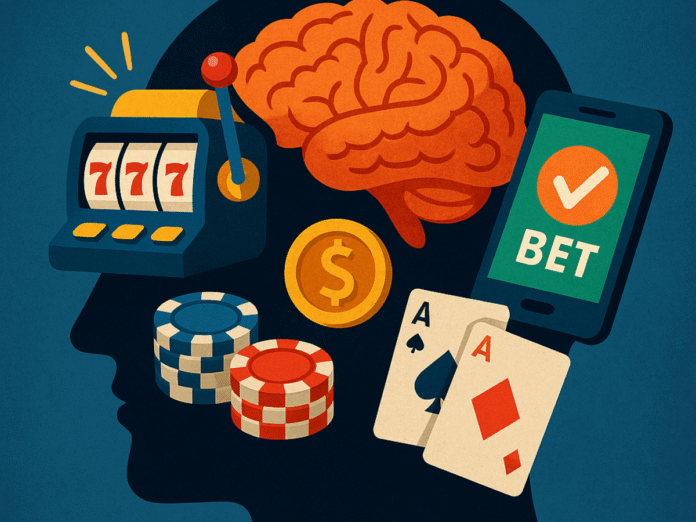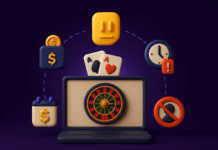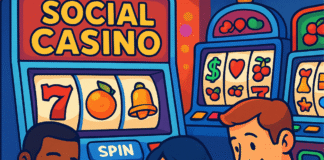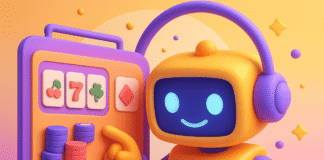Gambling has existed for centuries, but never has it been so pervasive, accessible, and psychologically engineered. Whether it’s slot machines, online casinos, sports betting apps, or even “loot boxes” in video games, gambling design today leverages powerful psychological principles to keep players engaged—and spending.
Behind every flashing light, celebratory sound, and near-miss lies a deliberate mechanism rooted in behavioral psychology and neuroscience. This article explores how gambling products are designed to exploit human cognitive biases, emotional triggers, and reward systems, revealing why these experiences can be so difficult to resist.
1. The Science of Reward and Reinforcement
At the heart of gambling design is the variable reward system, a concept first studied by psychologist B.F. Skinner in the 1930s. Skinner’s experiments with pigeons showed that animals pressed levers more frequently when rewards were given on a variable schedule—meaning they never knew exactly when they would get a treat. This became known as the variable ratio reinforcement schedule.
Gambling machines and apps use this same principle. Players win just often enough to keep them engaged, but not often enough to feel satisfied. The uncertainty itself becomes the hook. Each pull of a slot machine lever or tap on a screen releases a burst of dopamine, the brain’s “feel-good” neurotransmitter, not because of winning, but because of anticipation.
Neuroscience research shows that this anticipatory dopamine release is strongest when the outcome is unpredictable. This is why the “next spin” always feels exciting—even after a long losing streak.
2. Near-Misses and the Illusion of Control
Another powerful psychological device in gambling design is the near-miss effect. A near miss occurs when an outcome looks like a win but just barely isn’t—for example, when two jackpot symbols appear and the third lands just one space above.
Even though near misses are actual losses, the brain interprets them as almost wins, triggering the same reward pathways associated with actual success. Studies using brain imaging have shown that near-misses activate the striatum and insula, areas linked with motivation and anticipation.
This leads to a paradoxical effect: near-misses encourage players to keep playing, believing they are getting closer to winning, when in reality, each spin or bet is statistically independent.
Similarly, gambling systems often give players an illusion of control. For instance:
- Letting players “stop” the spinning reels manually.
- Allowing them to choose their own lottery numbers.
- Letting them select between “high” or “low” risk bets.
Even though these choices have no real influence on outcomes, they increase engagement and confidence, fostering a sense of mastery in an entirely random process.
3. The Role of Design, Sound, and Aesthetics
Modern gambling design is a multi-sensory experience. Designers use visual, auditory, and tactile feedback to manipulate emotions and enhance immersion.
Visual Cues
Bright colors, flashing lights, and celebratory animations signal excitement and success. These cues hijack the brain’s attentional system, rewarding visual stimulation and reinforcing the connection between play and pleasure.
Sound Effects
Casino designers know that sound is as critical as visuals. Every spin, chime, or win tune is engineered to produce positive reinforcement. Even small wins trigger sounds that resemble jackpots, creating the illusion of constant success—what researchers call “losses disguised as wins” (LDWs).
Aesthetic Flow
Gambling machines and digital interfaces are designed to facilitate continuous play. There are no interruptions or “natural stopping points.” Elements like “auto-spin” buttons, smooth transitions, and instant replays create a state of flow, where players lose track of time and money.
In essence, every design decision—from color palette to animation speed—is meant to extend engagement and suppress rational reflection.
4. The Role of Cognitive Biases
Gambling design also exploits a range of cognitive biases—systematic ways our brains misinterpret probability and randomness.
The Gambler’s Fallacy
This is the mistaken belief that past outcomes influence future ones (“I’ve lost five times in a row; I’m due for a win”). Designers exploit this by showing recent results or streaks, subtly encouraging players to “try again.”
Availability Heuristic
When players remember vivid wins more easily than countless small losses, they overestimate their chances of success. Casinos highlight big winners with announcements, photos, and jackpots precisely to reinforce this bias.
Confirmation Bias
Once players believe they are “lucky” or have a “system,” they selectively notice evidence that supports their belief and ignore contradictory results. Personalized stats and “winning history” feeds in online gambling apps encourage this selective attention.
Sunk Cost Fallacy
The more time and money a player invests, the harder it becomes to stop. Players feel compelled to “win it back” rather than walk away, a phenomenon casinos capitalize on with features that make it easy to reload or “double down.”
5. The Role of Data and Personalization in Modern Gambling

With the rise of digital gambling, data analytics has transformed how games are designed and marketed. Online casinos and betting apps track every interaction, from bet size and timing to time spent per session.
Machine learning models then use this data to:
- Predict when a player is likely to stop.
- Identify which stimuli (colors, sounds, offers) most effectively keep them engaged.
- Deliver personalized incentives, such as free spins or small credit bonuses, at moments of potential dropout.
This data-driven design creates a feedback loop between user behavior and product adaptation—making gambling increasingly addictive and tailored to individual vulnerabilities.
6. Emotional Manipulation and “Dark Patterns”
Gambling products are filled with what UX designers call dark patterns—interfaces that nudge users toward impulsive or harmful behaviors.
Examples include:
- Making the “Play Again” button brighter and more prominent than “Cash Out.”
- Using soft currency (chips, tokens, credits) instead of real money to dull the sense of financial loss.
- Introducing “false wins”, where celebratory animations play even when the payout is smaller than the bet.
- Removing clear “exit” buttons during bonus rounds to prevent disengagement.
These tactics exploit emotional highs and lows, creating cycles of hope, excitement, disappointment, and renewal—a loop that mirrors the psychological profile of addiction.
7. The Neuroscience of Addiction
Repeated gambling exposure alters brain chemistry. Chronic engagement with reward uncertainty leads to dopamine desensitization—the brain needs larger or more frequent stimuli to achieve the same pleasure response.
Over time, this rewiring of the mesolimbic reward pathway—the same circuit involved in drug addiction—causes players to chase excitement rather than actual monetary gain.
Neuroscientists describe gambling addiction as a behavioral addiction: it involves the same craving, compulsion, and loss of control observed in substance dependencies. What makes it especially insidious is its illusion of rationality—players believe they are making informed choices, not realizing how heavily those choices are shaped by design.
8. Social and Ethical Implications
The psychological sophistication of gambling design raises ethical questions. When every element is engineered to prolong engagement and maximize spending, where does entertainment end and exploitation begin?
Vulnerable populations—such as adolescents, individuals with impulsivity disorders, or those under financial stress—are particularly at risk. Online gambling’s 24/7 availability, combined with instant payment systems, amplifies harm potential.
Governments and regulators are increasingly aware of these issues. Some jurisdictions now mandate:
- Display of real-time spending and playtime data.
- Cooling-off periods and self-exclusion tools.
- Transparency around odds and payouts.
- Restrictions on near-miss designs and dark patterns.
Yet, the balance between player protection and industry profit remains deeply contested.
9. Parallels Beyond Casinos: The Gamification of Everything
Interestingly, gambling psychology extends beyond casinos. Social media platforms, mobile games, and e-commerce apps all borrow from the same behavioral playbook:
- Variable rewards (likes, loot boxes, surprise discounts)
- Progress bars and leveling systems
- Sound and animation cues for engagement
These systems tap into the same dopaminergic circuits, turning everyday activities into “gamified” experiences. The line between entertainment and compulsion continues to blur.
10. Toward Ethical Design and Awareness
Understanding the psychology of gambling design is not just about identifying manipulation—it’s about empowerment through awareness.
Consumers can protect themselves by:
- Recognizing how randomness is exploited.
- Setting strict limits on time and money.
- Avoiding auto-play or continuous play features.
- Viewing gambling as paid entertainment, not income.
At a societal level, ethical design means aligning technology with human well-being, not addiction. Designers can adopt responsible frameworks, such as:
- Transparent probability disclosures.
- Cooldown mechanisms.
- Neutral visual and auditory feedback for losses.
- Behavioral analytics that flag risk instead of exploiting it.
Conclusion
Gambling design is a masterclass in behavioral engineering—a carefully calibrated system that intertwines psychology, technology, and profit. Its power lies not in chance, but in the predictable ways human minds respond to uncertainty, reward, and control.
Understanding these mechanisms allows us to approach gambling with clearer eyes. What keeps us coming back isn’t luck or skill—it’s the product of deliberate psychological craftsmanship.
Only by recognizing this can we reclaim agency from systems designed to keep us spinning.
Sources:














